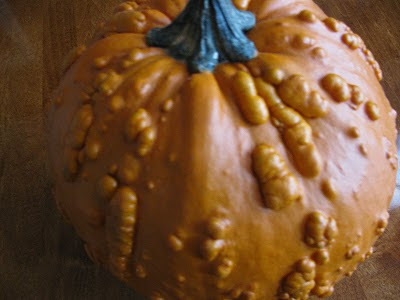


Food with attitude, slow and Southern. Visit farmers markets & festivals, catch fresh seafood, chat with chefs, farmers and producers from all over NC/SC/VA. Come into my kitchen to learn what to do with local, seasonal foods. . . .



 WEEKEND BREAKFASTS
WEEKEND BREAKFASTS








 A couple of weeks ago I found this squash or perhaps pumpkin at a roadside farm stand near Woolwine, VA. (Don't you just love that name, Woolwine?) What's it called? I asked. Permelon, the farmer answered.
A couple of weeks ago I found this squash or perhaps pumpkin at a roadside farm stand near Woolwine, VA. (Don't you just love that name, Woolwine?) What's it called? I asked. Permelon, the farmer answered. 




 TIME TO GET TO THE ROOT OF THINGS . . . . .
TIME TO GET TO THE ROOT OF THINGS . . . . .MEANWHILE, I MUST TELL YOU ABOUT A SPECIAL DINNER I ATTENDED . . . .

Roanoke, VA
Rappahannock Oysters. Golden Trout. Lamb from Border Springs Farm in Patrick County. How local can you get?
And visiting Chef Ed Lee, a James Beard award winner this year and chef/proprietor of 610 Magnolia in Louisville, KY, was pretty excited about working with such fine local ingredients for last week's special dinner. Chef Lee and Executive Chef Joshua Smith shared the menu, alternating preparing the six course menu.
What made this meal such a culinary delight? Using local ingredients with such a global influence, thanks in part to Chef Lee's Korean family background and his New York City upbringing.
A tiny, perfect little quail egg was criss-crossed with tiny strips of duck bak-kua, a traditional Chinese salty-sweet dried meat similar to jerky. Fried kale to add color and crispness. The lamb done "kalbi"-style, a traditional Korean method of marinating, then grilling meat. The final touch for dessert - a damson plum consomme with black sesame paste and basmati sherbet.
LOCAL ROOTS is open for lunch and dinner. Check out their marvelous seasonal menus. 1314 Grandin Rd SW, Roanoke, VA 540 206 2610
 White Shrimp, known to OBX locals as Green-Tails
White Shrimp, known to OBX locals as Green-Tails

 courtesy of Foggy Ridge Cider
courtesy of Foggy Ridge Cider
TERRAVITA - OCTOBER 16TH
Terra meaning “of the earth” and Vita meaning “life,” captures in its definition the very spirit of this event. The first of its kind, TerraVITA Food & Wine Event will bring together some of the finest biodynamic and organically-grown wines and microbrews in the world with the very best locally-grown organic edibles in the Southeast!
Alongside dozens of international fine wine producers and a select few microbrewers, chefs from North Carolina’s top restaurants, confectioners, cheese-makers and food artisans will prepare culinary treats using seasonal organic fare for all attending this sustainable celebration! If you appreciate fantastic food, love locally-grown, consider yourself a wine lover, or find yourself waking up early to get first dibs at the farmer's market, or know enough about beer to recognize the terms "hops"
and "microbrew," you will want to put this event on the calendar.
There will be an array of enticing food and beverage samples that will blow you away! The month of October offers a plethora of locally-grown ingredients, and whether you’re into grass-fed meat or you are a vegetarian chowhound, there will be plenty of choices - setting us all up for one of the most amazing buffets in the Southeast!
TerraVITA’s Grand Tasting on the Green will take place on The Green at Southern Village, an upscale, environmentally-conscious, mixed-use community in Chapel Hill, NC. Tickets are all-inclusive (Yes - all alcoholic and non-alcoholic beverages, as well as food samplings are included) and can be purchased for $65 each. That means the only reason you'll need to break out your wallet is to support our deserving non-profits!
We are fortunate to have some of the very best chefs in the state of North Carolina signed on to participate in TerraVITA! Look forward to experiencing wonderful tastings by Bill Smith and Paul Covington from Crook’s Corner, Vivian Howard from Chef & The Farmer in Kinston, Amy Tornquist from Watt’s Grocery, Stephen Ribustello from On The Square in Tarboro (and featured in the August issue of Our State magazine), Jimmy Reale from Carolina Crossroads, and on and on... See the Food & Beverage page for more specific details on “who” will be with us on October 16th!
The event will begin at 1 p.m. with will-call at check-in (there will be no tickets actually sent), where you will receive your wine glass and begin experiencing an afternoon of tastings – selecting from more than 80 Biodynamic or organically-grown wines, sustainably-produced microbrews and some of the best locally-grown organic foods available…
For more info or to get your tickets www.terravitaevent.com/


 MAKING A MEMORABLE MEAL
MAKING A MEMORABLE MEAL A DAY OF GOOD EATING
A DAY OF GOOD EATING
 MY MOUNTAIN STASH
MY MOUNTAIN STASH